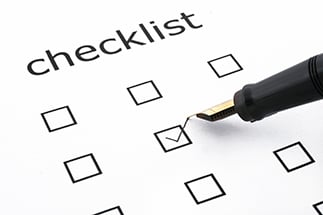8 tips and tricks for how to organise your home

There are a multitude of practical tips and tricks you can use to organise your home. They are all relatively easy to implement, though you may have to spend a little time initially putting them into place. However, every family is different, so use the tips and tricks that you know will be the most helpful to you and the needs of your family in terms of organising your home.
Get rid of clutter
It’s amazing all the “stuff” you can accumulate without really realising it. Take an inventory of all the items you have in your home that you simply don’t use or no longer have a use for. These unused items can range from clothes that your little one has grown out of through to extra tables and chairs you may have collected and no longer use.
You can dispose of them several different ways:
- You can give it away to friends or family who may have a use for them.
- List the items on Gumtree or OLX and make some of your money back. It might be a little time consuming initially, but can be well worth the effort.
- You can donate items to orphanages, old age homes or charity shops – then at least you know it is for a good cause.
Sort your storage
It’s worth going through your home room by room and taking note of which objects and items are left lying around. Sometimes it can be your little one’s toys and other items might be files, homework or school projects.
After you have evaluated the objects that take up space or create clutter, think about the best ways to store them. Suggestions include:
- Get some plastic tubs that you label clearly. You can use these to store shoes or toys.
- Put some hooks on the wall to hang jackets or to display school-work.
- You may need to invest in some storage shelves so that magazines, files or projects can be safely stored, rather than taking up valuable kitchen or table workspace.
De-clutter your kitchen space
Take a good look at your kitchen and assess your needs. You might like to ask yourself the following questions:
- What items do I use most regularly?
- Do I need storage space for my cookbooks?
- What appliances do I use often?
- Go through the drawers and kitchen cupboards and get rid of pots or pans you never use.
- Remove lids or containers that don’t match anymore or can’t be used to store things.
- In your pantry, store all your dry staple goods such as flour and rice in see-through storage containers. This makes it quicker and easier to know if you are running low on supplies.
- Have a shelf where you store items you use every day, like salt, pepper and teabags.
- Install drawer dividers so that you can store utensils neatly.
- Install appliances you use daily on your bench-top or have them stored close at hand.
Organise your cupboards and drawers
This can be a very satisfying exercise. You’ll need two large plastic bags and to set aside a few hours to complete the project properly.
- Have 2 bags, one for “throwing away”, one is for “giving away.”
- Go through your bedroom drawer-by-drawer and lay items out on the bed.
- Empty your cupboards as well.
- Now make lists of what clothing items you do have and map out a plan for storing them.
- Take out clothes that are badly damaged or that aren’t suitable to pass on to others and place them in the “throw-away pile”.
- Go through and assess the remaining clothes. If you haven’t worn in it in the past 12-18 months, then be ruthless and place it in the “giving away” bag.
- Now focus on placing the items back in your drawers and wardrobe in an orderly manner.
- It’s sensible to group like items together.
- For instance, you should keep long sleeve t-shirts in one pile and short sleeve t-shirts in another.
- Organise clothes that need to be hung up in a logical order. Arrange your shirts by colour from light to dark, then do the same with your trousers, dresses or skirts.
- Place your shoes neatly on their storage rack or alternatively in see-through plastic tubs.
Re-order your laundry

The laundry room or space will get a great deal of traffic throughout the week. It’s sensible to organise it so that everything flows through it.
- Aim to get the washing out of the machine as soon as the load is finished. This reduces wrinkling and saves time with folding at the other end. Invest in a few laundry baskets. They can always be stacked on top of each other when not in use.
- Use the baskets to store laundry in piles of light, dark and coloured.
Simplify your study
The endless stream of paperwork that can pile up in your study or on the hall table can quickly become overwhelming. It’s worth implementing some strategies to help tackle this head on.
- Go through your mail on a daily basis. Get rid of junk mail immediately. It will often reduce your pile by 50%.
- Put your partner’s mail on their desk or workspace so they can address it when they have time.
- If you receive mail about your children, have a specially labelled file or folder you can store it in after you’ve actioned it. It might be useful to call on for reference later on.
- Set up an “in” and “out” mail file. That way you can keep track of which bills or mail you need to action and what can be stored away.
- If you want to have a more detailed mail management section, set up some file dividers and label them as follows:
- Pay
- Read
- Hold
- Reply
- Pending
- Set up files with a series of dividers to store correspondence. The sections may include:
- Tax
- Insurance (Home) (Car) (Health)
- Car repairs
- Electricity
- Water
- Rates
- Warranties
- Phone
- Bank
- Pension plans/ Retirement Annuities
Make a menu planner
It’s a practical way to ensure that your kitchen is consistently well stocked and that your family has access to a varied and nutritious menu plan.
Create a cleaning schedule
By setting up a cleaning schedule, you are helping to ensure the house runs smoothly. You can use our detailed suggestions on speed cleaning to help you organise your home here.
A basic daily cleaning schedule might look something like this:

- Make beds
- Empty the rubbish bins
- Wash dishes/ unpack dishwasher
- Restock bathroom
- Put in laundry

